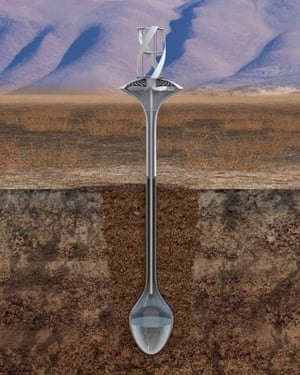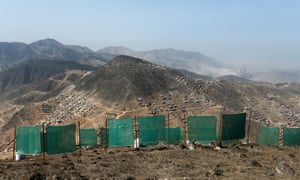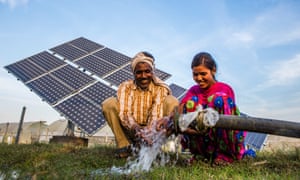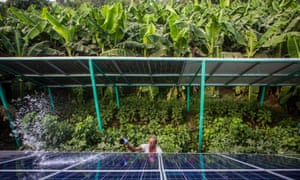The global water crisis has many causes, requiring many different solutions. As 1.2 billion people live in areas of water scarcity, these solutions must span policy, technology, and behaviour change to make a real difference.
A number of technological innovations address the crisis in novel ways. We asked two water experts – Vincent Casey, senior water and sanitation adviser at WaterAid, and Hannah Safford, an energy and environmental policy analyst – to assess some of the most creative approaches.
Drinkable Book

In partnership with non-profit Water is Life, researchers at Carnegie Mellon University developed this education and filtration tool. Each page of the book provides basic water and sanitation advice, such as the importance of keeping contaminants like rubbish and faeces away from water, often unknown in developing countries. Perhaps more novel is that the advice is printed on “scientific coffee filter” paper that can be used to purify drinking water and reduce 99.9% of bacteria. Each book has enough filtration sheets to provide its reader with clean water for four years. It’s being distributed in Ghana, Kenya, Haiti, Ethiopia, India and Tanzania, and a Farsi version of the book is in development.
Casey: Many different filter products will purify water and remove pathogens, but it needs to have a demand from users. It also needs to be affordable [in the local context] or come with some credit mechanism. Filters play a crucial role in making the water safe, but if you’re not blocking other routes of transmission (eg flies on food, handwashing after toilet use) you will still have problems. In other words, any filter has to be part of a combined solution.
WaterSeer

It looks like a well, but instead of withdrawing groundwater, the WaterSeer uses the surrounding environment to extract water from the atmosphere. It is planted six feet below the surface, where its lower chamber is surrounded by cool earth. Above ground, wind spins a turbine which spins fan blades inside the device. These blades send the air into an internal condensation chamber where, as the warm air cools, the vapour condenses on the sides of the chamber. Water then flows down to the lower chamber and can be extracted with a simple pump and hose. In ideal conditions, it can collect 37 litres of water a day. Developed by VICI labs in the US, the project is being tested by the National Peace Corps Association and will be piloted later this year.
Casey: If we take sub-Saharan Africa as an example, groundwater tends to be available in most places we work – about 20m below the surface. So it’s a management or infrastructure problem that prevents people accessing water, not a lack of it. It’s not really about fixing the problem with technology; it’s about fixing the system. With this example, I would imagine there could be problem with vandalism, as the device seems quite fragile. However, that’s not to say that technology is not part of the solution – it has a role, but it’s makes up 20% of the whole picture, along with policy and management.
Graphene filters
Desalination, converting saltwater into freshwater, has historically been too expensive and energy-intensive to serve as a widespread solution for improving access. However, Lockheed Martin has developed and patented a Perforene graphene filter which it claims would reduce the energy cost of conventional reverse osmosis desalination by 20%, while withstanding higher pressure and temperatures. The perforated, hyper-permeable filter is one atom thick and is said to improve the flow of water compared to conventional methods by 500%. While the technology would be hugely beneficial to the oil and gas sector, which reportedly produces 18bn gallons of wastewater each year, the company is also researching other applications for the technology, including in food and energy generation.
Safford: Desalination should only be used as a last resort. Emphasis should be placed on smart water management, reducing water losses, and increasing the uptake of water-efficient technologies practices. But in regions where there is truly not enough freshwater to meet demand, a cheaper and less energy-intensive desalination method is certainly a good thing.
Fog catchers

Vast mesh nets capture moisture from fog, which drips into collection trays after condensation. The largest of these projects is on the slopes of Mount Boutmezguida, a microclimate in Morocco where 6,300 litres of water can be harvested per day. The water is clean, free and instant, which is perhaps why Dar Si Hmad – the non-profit responsible for the project –was awarded the UN’s 2016 Momentum for Change award. First developed in South America, fog catching systems also exist in Chile, Peru, Ghana, Eritrea, South Africa and California.
Safford: Fog catching could provide a sustainable supply of drinking water for small communities in water-scarce regions, but it is unlikely to generate enough water to significantly increase water supplies. The Mount Boutmezguida project only generates enough water to serve about 160 people per day – a project of a similar size in a developed country would serve a smaller number of people [due to higher consumption habits].
Solar crop

In hot and dry climates, many farmers pump groundwater to irrigate crops, and there has been a growth in the use of solar-powered pumps. A problem arises when farmers view solar energy as free, as it can cause over-irrigation. A part-technological, part policy and management solution by CGIAR’s research programme on water, land and ecosystems, and in partnership with the International Water Management Institute (IWMI), incentivises farmers using solar pumps to sell excess power back to the grid. The guaranteed buy-back scheme produces a “triple win”; farmers gain income, the state gains electricity reserves, and the water source is conserved by curbing usage – all while reducing carbon emissions. The scheme is being piloted in Gujarat, and IWMI estimates that solarising India’s 20m irrigation wells could reduce carbon emissions by 4-5% per year.
Casey: A good initiative addressing a serious problem through changes to policy and management, not just focusing on a technical solution. In addition, selling electricity back to the grid could generate revenue to conduct maintenance on these pumps – a good sign for the sustainability of the arrangement.
What have we missed? Have you developed technology to tackle water problems? Tell us in the comments below.
Join our community of development professionals and humanitarians. Follow @GuardianGDP on Twitter, and have your say on issues around water in development using #H2Oideas.


View all comments >